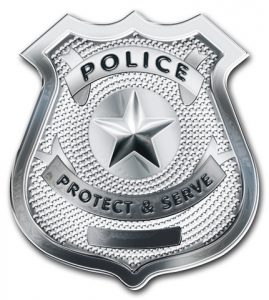 Everyone has seen the message “To Protect and Serve” on the sides of law enforcement vehicles either in their hometowns or at least on television in shows like CHiPs and Hawaii 5-0. The average person understands that the term “Protect” indicates that the officer is there to be a guardian or protector of the innocent, not to be at “war’ with them.
Everyone has seen the message “To Protect and Serve” on the sides of law enforcement vehicles either in their hometowns or at least on television in shows like CHiPs and Hawaii 5-0. The average person understands that the term “Protect” indicates that the officer is there to be a guardian or protector of the innocent, not to be at “war’ with them.
What Does “To Serve” Really Mean?
Since the average citizen has at least a basic understanding of what the term “To Protect” means, what does “To Serve” really mean? In reality, the two terms are forever linked together as the job of a police officer is to both protect and serve at the same time. Many officers might say that despite the use of the term “To Serve” that they are no one’s servant.
However, according to Robert Greenleaf founder of the Greenleaf Center for Servant Leadership, “The servant-leader is a servant first… It begins with the natural feeling that one wants to serve, to serve first. Then conscious choice brings one to aspire to lead. That person is sharply different from one who is a leader first, perhaps because of the need to assuage an unusual power drive or to acquire material possessions…”
He goes on to say, “The difference manifests itself in the care taken by the servant-first to make sure that other people’s highest priority needs are being served. The best test, and difficult to administer, is: Do those served grow as persons? Do they, while being served, become healthier, wiser, freer, more autonomous, more likely themselves to become servants? And, what is the effect on the least privileged in society? Will they benefit or at least not be further deprived?”
Finally, he says this, “A servant-leader focuses primarily on the growth and well-being of people and the communities to which they belong. While traditional leadership generally involves the accumulation and exercise of power by one at the ‘top of the pyramid’ servant leadership is different. The servant-leader shares power puts the needs of others first and helps people develop and perform as highly as possible…”
So, when you take these concepts and apply them to the job of a police officer, it should be easy to understand why so many police departments include both “To Protect” and “To Serve” on the doors of their vehicles, on their badges, or in many other locations. The main goal of posting this is not to follow a tradition, but to show the general public that the goal of their local law enforcement agency is to both protect and serve its citizens.
Law enforcement officers should realize they have the privilege of being able to spend time in their local communities anytime day or night, and in any weather to assist with an incredibly diverse range of requests for assistance (To Protect). They are in the unique position of being the first one on the scene to provide one on one assistance (To Serve). This is more than just a calling for most officers, it is also a privilege.
